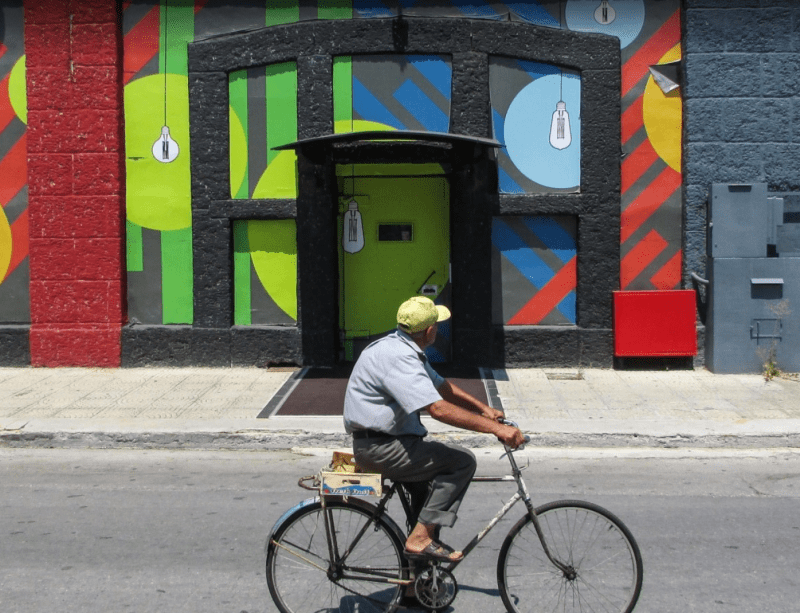A new study finds that traffic violence deaths among adult cyclists in the U.S. have tripled since 1975, even though cycling deaths overall have fallen by 17 percent in the same period — suggesting that some of our country's "wins" in the fight to end traffic violence have come because children stayed off bikes, while older riders climbed on.
In a comprehensive review of the scientific literature on bike crashes contracted by personal injury attorneys at Rosenthal Law, analysts examined a stack of troubling data about the changing demographics of dead cyclists on our roads. Although 1975 was far from a good year for biking — 1,003 U.S. cyclists lost their lives — at least a broad cross-section of Americans did bike in the 70s, including many children and young adults under 20. But as time went on, parents and caregivers reacted to our increasingly car-dominated roads by pulling their kids off of bicycles and into family cars, cutting the number of cycling deaths among young people by 88 percent — at the expense, however, of children's independence, health, and joy on two wheels. In 1969, almost half of elementary- and middle-school children walked or rode their bikes to school; in 2017, only 10 percent did.
Interestingly, as young bikers started disappearing from our roads, deaths skyrocketed among the adult bicyclists who remained: From 1975 through 2000, their biking fatalities rose by 115 percent.
After the turn of the millennium, the researchers found even more cause to worry. From 2000 to 2018, researchers found that there was almost no growth in total adult cycling rates, yet the number of fatalities among cyclists over age 20 climbed by 43 percent.
But cycling rates weren't flat among every age group — and a turn of the century boom in cycling popularity among middle-aged riders may help explain the disparate death toll.
"My initial thoughts [when I saw the 21st century fatality data] were that cycling has really exploded in popularity among older adults [aged 45 and up] over the last 20 or so years, perhaps thanks to Mr. [Lance] Armstrong — despite his doping," laughs Brian Beltz, an analyst behind the Rosenthal study. "That is part of it, but it’s actually a change in usage among two age groups."
In another study Beltz featured in the report, researchers found that the number of cycling trips taken by riders aged between 45 and 64 grew by 57 percent from 2001 to 2017 — while adults over age 65 took a whopping 66 percent more trips over the same period. Not surprisingly, the average age of a cyclist killed in traffic rose from 40 in 2007 to 47 in 2018 — and in 2017, bicycle fatalities actually occurred most often among cyclists ages 50 to 54.
Put another way: although the stereotype of the middle-aged man in Lycra dominating bike lanes isn't really true, the folks who tend to die in bike crashes do tend to be closer to a senior discount than their senior year of college. (It is true that most dead riders are male; the survey also found ample evidence suggesting that bicyclist deaths are as much as eight times higher among male-identified riders than female-identified ones. No word on the Lycra.)
Research is thin on why there are such shocking age disparities in cycling deaths, but experts have long noted that older road users on any mode of transportation are more likely die in a crash with a driver, because older bodies are more susceptible to serious injury. How older cyclists ride their bikes may also play a role; a 2015 report found that more than twice as many older adults ride exclusively for recreation than ride exclusively for transportation; some speculate that recreational routes may take older riders onto more dangerous, rural terrain.
"I believe that the type of cycling older adults do plays into it, i.e. taking longer rides, using trails or bike paths that cross or run parallel to heavily trafficked roadways," Beltz said.
Of course, no matter where they choose to ride, cyclists should have a right to safety on our roads — and everyone should feel safe getting out on two wheels, no matter their age. Reports like this are great, but to see real change, our governments should collect comprehensive age, gender, racial, income, and other demographic information on cycling crash victims — not to mention living cyclists — and use that data to craft real action to save more lives, without simply forcing parts of our population off their bikes altogether.






